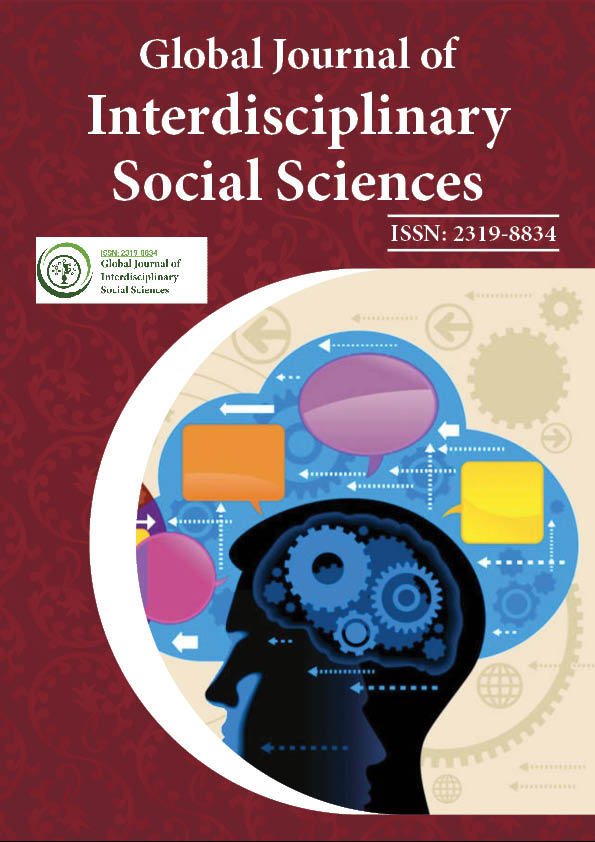Indexed In
- JournalTOCs
- Google Scholar
Useful Links
Share This Page
Journal Flyer

Open Access Journals
- Agri and Aquaculture
- Biochemistry
- Bioinformatics & Systems Biology
- Business & Management
- Chemistry
- Clinical Sciences
- Engineering
- Food & Nutrition
- General Science
- Genetics & Molecular Biology
- Immunology & Microbiology
- Medical Sciences
- Neuroscience & Psychology
- Nursing & Health Care
- Pharmaceutical Sciences
Short Communication - (2022) Volume 11, Issue 3
Fundamental Laws Involved in the Formation of New States in India
John Matthew*Received: 02-May-2022, Manuscript No. GJISS-22-17125; Editor assigned: 04-May-2022, Pre QC No. GJISS-22-17125(PQ); Reviewed: 20-May-2022, QC No. GJISS-22-17125; Revised: 27-May-2022, Manuscript No. GJISS-22-17125(R); Published: 03-Jun-2022, DOI: 10.35248/2319-8834.22.11.024
Description
Constitution of India is the supreme law of our country and therefore every law enacted through the government of India must comply with it. We know that it came into impact on 26th January, 1950. Our Constitution avows the ''Union of India'' to be a sovereign, democratic republic, assuring its citizens of justice, equality and liberty and to promote fraternity among them all. In 1976, by constitutional amendments, the phrases 'socialist', 'secular' and 'integrity' and 'Fraternity' have been added. Our Constitution is the longest written constitution of any sovereign country in the entire world. It consists of 395 articles in 22 parts, 12 schedules and 94 amendments. There are approximately 1,17,369 words in our constitution. It was written in English. That too, it was also translated into Hindi language officially. Amendments to the constitution can be made through Parliament, but the Hon'ble Supreme Court of India held (though it is rather controversial) that not every constitutional amendment is permissible. An amendment need to recognize the 'fundamental structure' of the constitution, that is immutable. The method is laid out in Article 368 [1,2].
One of unique functions of the union of India is that the union is indestructible but the power conferred on Parliament includes the power to form a new state or union territory through uniting part of any State or Union territory to different State or Union territory [3]. The identity of States can be altered or even expunged by the Parliament. The Constituent Assembly declined a motion in concluding levels to designate India as '' Federation of States''. Article 1 elucidates India a ''Union of States''. These states are specified in the First Schedule of the constitution. First Schedule lists the States and Territories of India and also lists if any modifications to borders of them. Articles 2, 3 and 4 enable parliament by law admit a new state, increase, decrease the place of any state [4].
The authors of Indian constitution, unlike the current generation of Indians, did not believe that the states, districts and mandals within India are static, unchanging, and permanent. They had the maturity to accept that states would evolve and change, and therefore made provisions for creation of new states in Indian Union [5]. The intention seems to be given a possibility to the State legislature to convey its view within the time allowed. If the State Legislature fails to avail itself of the opportunity such failure would not invalidate the announcement of the Bill.
Conclusion
There is nothing in the proviso to indicate that Parliament need to accept or act upon the view of the State Legislature. Indeed State Legislatures may also explicit completely divergent views. All this is pondered is that the Parliament must have before it the views of the State legislature to the proposals contained in the bill after which be free to deal with the bill.
REFERENCES
- Cheng S. Spatially Varying Relationships of New Firm Formation in the United States. 2011; 45(6): 773-789.
[Crossref] [Google Scholar].
- Kovalenko V. Formation and Development of Human Capital in Unrecognized States. 2021;159-175.
[Crossref].
- Lehtinen S. The Legacy of Initial Regimes and Democratization in New States. 2019; 109-138.
[Crossref] [Google Scholar].
- Michon C. State Prelates in Renaissance France and England: New Light on the Formation of Early Modern States1. 2011;9(11):876-886.
[Crossref] [Google Scholar].
- Murphy BP. Empire State Building: Interests, Institutions, and the Formation of States and Parties in New York, 1783-1845.
[Crossref].
Citation: Matthew J (2022) Fundamental Laws Involved in the Formation of New States in India. Global J Interdiscipl Soc Sci. 11:024.
Copyright: © 2022 Matthew J. This is an open-access article distributed under the terms of the Creative Commons Attribution License, which permits unrestricted use, distribution, and reproduction in any medium, provided the original author and source are credited.

